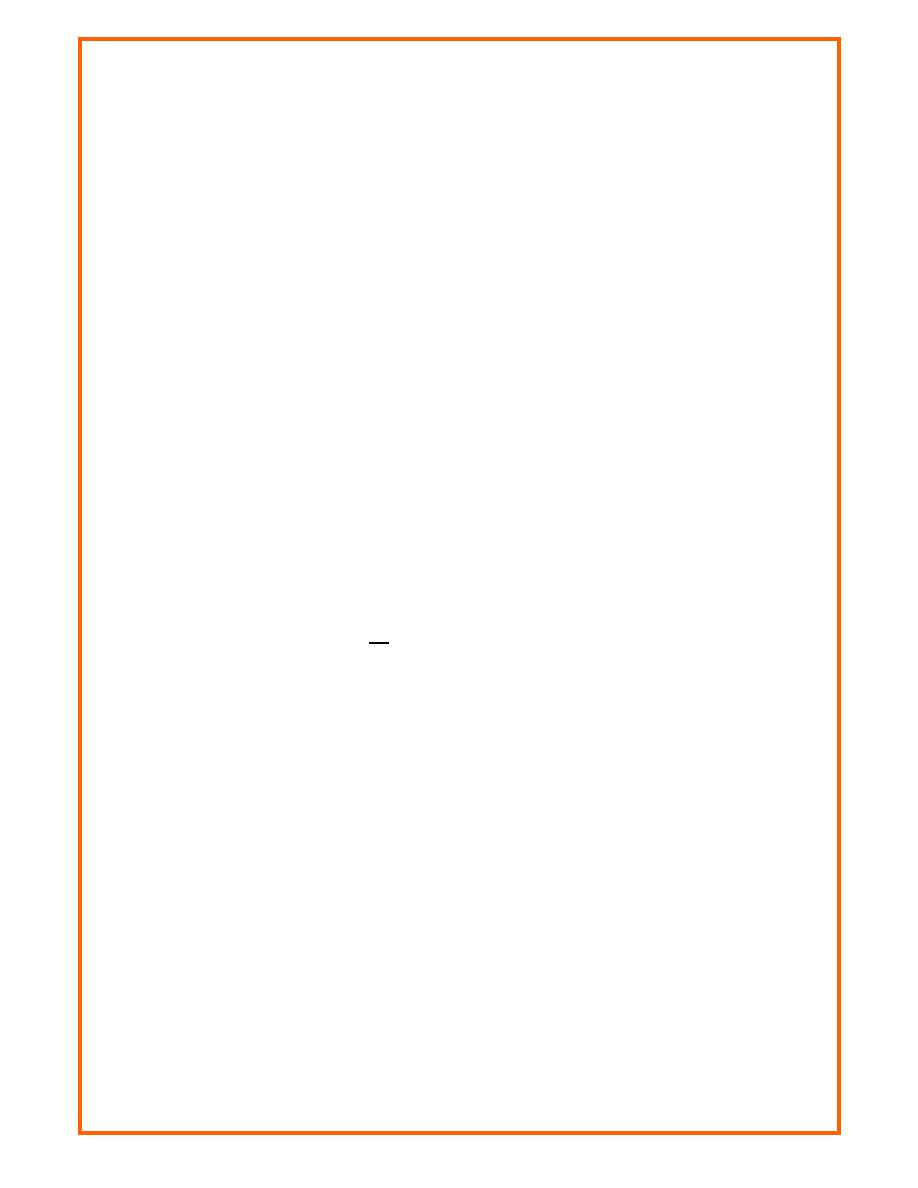
CETN IV-17
March 1999
In the field, waves are irregular, and there is a distribution of wave heights and wave periods.
Because of the wave-height variability, many definitions of wave height (statistical and spectral)
are possible and are used according to the particular application, such as follows:
& , the mean wave height.
H
H1/3, the significant wave height (average of the highest one-third of the wave heights).
Hmo, the zero-moment wave height (based on the energy in the wave spectrum).
H1/10, the average of the highest one-tenth of the wave heights.
H1/20, the average of the highest one-twentieth of the wave heights.
H1/100, the average of the highest one-hundredth of the wave heights.
Equation 2 was developed for monochromatic waves; thus, it may overpredict or underpredict the
wave height (depending on the definition) for irregular waves.
The Coastal Inlets Research Program is evaluating and developing methods to estimate wave
conditions in coastal inlets. A product of this effort has been evaluation of breaking criteria based
on laboratory data collected in an idealized 1:50-scale inlet model (Smith et al. 1998). The
idealized inlet was an opening in a straight beach with rock jetties. The offshore bathymetry was
parallel to the straight shoreline, except for an ebb shoal, symmetric about the inlet center line.
Water was pumped through the bay area to simulate ebb current through the inlet. The scaled
wave conditions were Hmo = 3 to 13 ft (0.9 to 4.0 m) and peak period Tp = 5 to 12 sec; the scaled
inlet/ebb-shoal water depths were d = 9 to 20 ft (2.7 to 6 m); and the scaled current velocities
were U = 0 to -7.2 ft/sec (0 to -2.2 m/sec) (negative velocity denotes a current opposing the
waves). From this laboratory data set, the following breaking criteria were determined:
H = 0.07L tanh kd
(3)
H mo = 0.10 L tanh kd
(4)
H1/3 = 0.10 L tanh kd
(5)
H1/10 = 0.12 L tanh kd
(6)
H1/20 = 0.13L tanh kd
(7)
H1/100 = 0.15L tanh kd
(8)
These criteria represent a maximum value of the wave statistic, based on the local wavelength and
water depth. These equations were determined from an average of the highest 10 percent of the
parameter H/(L tanh kd) (where H is defined as each of the wave-height parameters given in
Equations 3-8) measured for 47 irregular laboratory wave conditions at 12 inlet/ebb-shoal wave
gauges. The breaking-wave heights, especially the higher wave heights, are not well represented
by the Rayleigh distribution. Additional discussion of wave breaking on a current and methods to
3


 Previous Page
Previous Page
